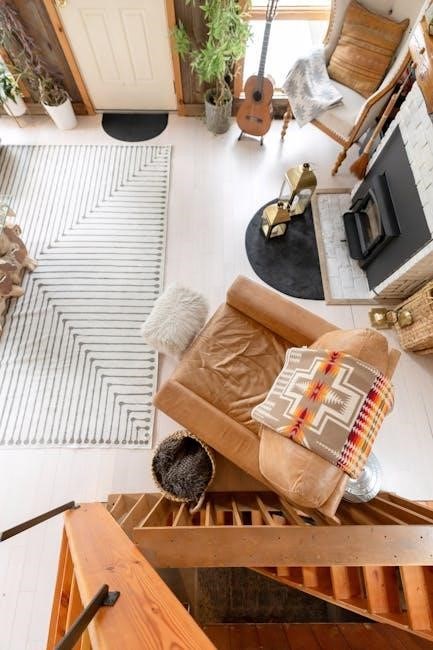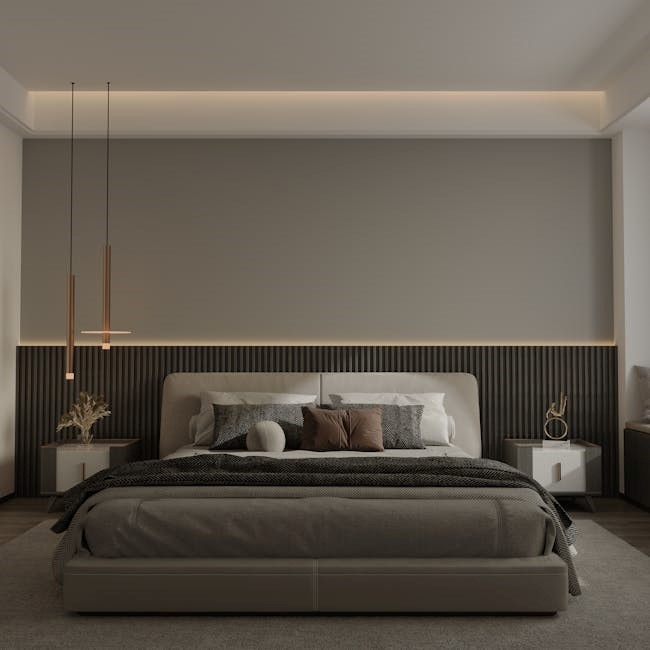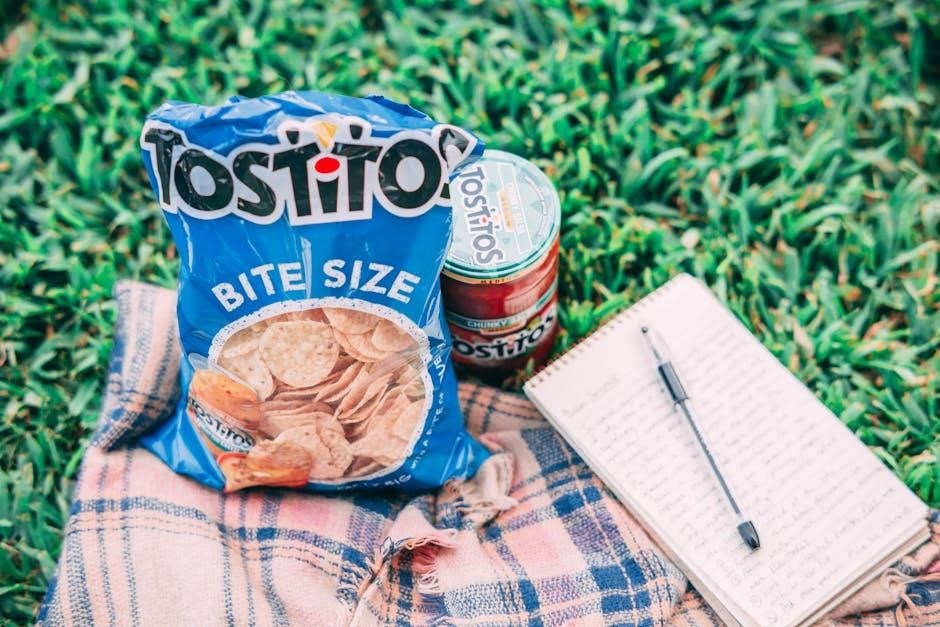Welcome to our comprehensive blanket size guide, helping you choose the perfect blanket for your needs. Discover standard dimensions and tips to enhance your cozy home decor.
Understanding the Importance of Blanket Sizes
Choosing the right blanket size is crucial for comfort, functionality, and aesthetics. Properly sized blankets ensure adequate coverage, whether for bedding or decorative purposes. A blanket that is too small may leave gaps, while one that is too large can overwhelm a space. Understanding standard dimensions helps in selecting blankets that fit beds, rooms, and personal preferences. This guide provides insights into how blanket sizes impact usability and decor, ensuring your choice enhances both practicality and style. By prioritizing size, you can enjoy optimal comfort and a cohesive design in any setting.
- Comfort: Ensures proper coverage for restful sleep or relaxation.
- Decor: Maintains a balanced and visually appealing room layout.
- Functionality: Suits specific needs, like bed blankets for sleeping or throws for decoration.
- versatility: Allows blankets to adapt to various settings and purposes.
Overview of Standard Blanket Dimensions
Standard blanket dimensions vary to accommodate different bed sizes, room settings, and personal preferences. Common blanket sizes include Twin (90×90 inches), Full/Double (90×96 inches), Queen (90×102 inches), King (102×86 inches), and California King (102×92 inches). Throw blankets typically measure 50×60 inches, offering cozy, compact coverage. These dimensions ensure blankets fit beds properly, provide comfort, and complement room decor. Understanding these standards helps in selecting the right size for your needs, ensuring both functionality and style.
- Twin: Ideal for single beds or small spaces.
- Queen: Perfect for larger beds and comfort.
- Throw: Great for decorative or extra warmth.
Purpose of the Blanket Size Guide
The purpose of this guide is to provide a clear understanding of blanket sizes, ensuring you find the perfect fit for your needs. Whether for a bed, sofa, or decorative use, this guide offers insights into standard dimensions, materials, and styles. It helps eliminate guesswork, saving time and effort when selecting blankets. By understanding size options, you can enhance comfort, aesthetics, and functionality in your home. This guide is essential for anyone looking to make informed decisions about blanket sizes, ensuring satisfaction and value.
Types of Blankets and Their Sizes
This section explores various blanket types, including bed, throw, and specialty blankets, each with specific size ranges to perfectly suit different needs and preferences.
Bed Blankets vs. Throw Blankets
Bed blankets and throw blankets differ significantly in size and purpose. Bed blankets are designed to fit mattresses, available in standard sizes like twin, full, queen, and king, ensuring full coverage. Throw blankets, smaller and more versatile, typically measure 50×60 inches, ideal for decorative accents or cozy layering. Bed blankets prioritize functionality, while throw blankets focus on style and portability. Materials also vary, with bed blankets often using heavier fabrics for warmth and throw blankets favoring softer, lightweight fabrics for comfort and aesthetics. Understanding these distinctions helps in selecting the right blanket for your needs.
Standard Sizes for Bed Blankets
Bed blankets come in various standard sizes to fit different mattresses. Twin blankets measure 66×90 inches, suitable for single beds. Full/Queen sizes are 90×90 inches, ideal for larger beds. King blankets are 102×86 inches, offering ample coverage for king-size mattresses. These dimensions ensure a snug fit, draping evenly over the mattress. Standard sizes are designed for functionality, providing comfort and ease of use. Always check mattress dimensions to select the perfect bed blanket size for a seamless fit and optimal warmth.
Standard Sizes for Throw Blankets
Throw blankets are designed for comfort and decor, typically measuring between 50×60 inches. This size offers partial coverage, ideal for snuggling on a sofa or adding a decorative touch. Some throws are slightly smaller, around 48×60 inches, while others may be larger, up to 60×80 inches. The standard size ensures versatility, fitting most living spaces without overwhelming the area. Throw blankets are perfect for accentuating home decor while providing warmth and coziness, making them a popular choice for indoor and outdoor use.
Specialty Blankets and Their Dimensions
Specialty blankets cater to unique needs and preferences, offering tailored sizes for specific purposes. Baby blankets are typically smaller, around 30×40 inches, while lap blankets for seniors measure about 35×40 inches. Travel blankets are compact, often 50×60 inches, perfect for on-the-go use. Pet blankets vary widely, from 24×30 inches for small pets to 40×50 inches for larger animals. These sizes ensure functionality and comfort, making specialty blankets ideal for niche requirements and personalized use. They blend practicality with design, enhancing both utility and style.
Measuring for the Perfect Blanket
Measuring your space ensures the perfect fit. Measure bed length and width, adding 4-6 inches for overhang. For throw blankets, measure the desired coverage area precisely.
How to Measure Your Bed for the Right Blanket Size
Measuring your bed accurately is key to selecting the perfect blanket. Start by measuring the mattress length and width, including any toppers. Add 4-6 inches for overhang on all sides. Consider the bed type: standard, adjustable, or platform beds may require different measurements. Note if you prefer a snug fit or extra drape. Use a flexible tape measure for accuracy. Double-check your numbers to avoid sizing errors. If layering blankets, measure the thickest combination. This ensures your blanket fits seamlessly, enhancing comfort and aesthetics.

Measuring for Throw Blankets
Measuring for throw blankets involves considering both functionality and aesthetics. Standard sizes range from 50×60 inches, but dimensions can vary based on intended use. Measure the space where the throw will be placed, such as a sofa, armchair, or bed. Add a few inches to the dimensions for drape. Consider the chair or sofa height to ensure the blanket hangs evenly. Personal preference also plays a role—some prefer a longer drape, while others like a more compact fit. Material thickness and weight may also influence size choices for the perfect cozy addition.
Factors to Consider When Choosing a Blanket Size
When selecting a blanket size, consider the intended use, room decor, and personal preferences. Measure the bed or furniture to ensure proper fit. Fabric weight and weave impact drape and coverage. Seasonal needs may require larger or smaller sizes. Budget constraints influence material choices and size options. Aesthetics, like matching colors, matter for decor. Additionally, think about the number of users and desired coverage area. Balancing these factors ensures the perfect blanket for comfort and style, making your space cozy and inviting while staying within your means.

Fabric Weight and Weave
Fabric weight and weave significantly impact blanket size, drape, and comfort. Lighter fabrics may require larger sizes for warmth, while denser weaves offer structure and durability.

How Fabric Weight Affects Blanket Size
Fabric weight plays a crucial role in determining blanket size. Heavier fabrics, like wool or fleece, may require smaller dimensions due to their thickness and warmth retention. Lighter materials, such as cotton or linen, often need larger sizes to provide adequate coverage and insulation. The weight also influences drape and comfort, with heavier fabrics offering a cozy, snug feel and lighter ones providing a more breathable texture. Understanding fabric weight helps in selecting the ideal size for functionality and aesthetic appeal, ensuring the blanket meets both practical and decorative needs.
Different Fabric Weaves and Their Impact on Size
Fabric weave significantly influences blanket size and performance. Tight weaves, such as twill or satin, create dense, durable fabrics that retain warmth and resist wear, often suitable for larger blankets. Loose weaves, like plain or gauze, offer breathability and flexibility, ideal for smaller, decorative throws. The weave also affects shrinkage and drape, with tighter weaves generally having less shrinkage and more structure, while loose weaves may shrink more and drape softly. Choosing the right weave ensures the blanket size aligns with its intended use, whether for warmth, decoration, or everyday comfort.

Blanket Sizes by Room and Decor
Blanket sizes vary by room and decor, ensuring functionality and style. Choose sizes that complement bed, sofa, or chair dimensions, enhancing your space’s aesthetic and comfort seamlessly.
Choosing the Right Blanket Size for Your Bedroom
Selecting the perfect blanket size for your bedroom involves considering bed dimensions, personal preference, and decor. Standard bed blankets range from Twin (39×75″) to California King (72×84″). Measure your mattress to ensure proper fit, with a drop of 8-12″ on all sides. For a cozy look, choose a size that drapes elegantly. Throw blankets (50×60″) add style and warmth. Match your blanket size to your room’s aesthetic, ensuring comfort and visual harmony. This guide helps you make informed decisions for a restful and inviting bedroom sanctuary.
Blanket Sizes for Living Room Decor
Blanket sizes in the living room enhance both comfort and style. Throw blankets (50×60″) are ideal for accents, while larger options (80×90″) offer full coverage. Consider furniture size and room layout. Throws add color and texture, while bigger blankets keep the space cozy. Choose sizes that complement your decor, ensuring they fit snugly over sofas or chairs. Measure furniture dimensions to select the perfect fit, creating a welcoming ambiance that balances functionality and aesthetics in your living space.
Crochet and Knitting Blankets
Crochet and knitting create personalized, cozy blankets. Patterns vary, but standard sizes guide projects. Twin, queen, and king options ensure perfect fits. Customize yarn and stitches for unique styles.
Standard Sizes for Crochet Blankets
Crochet blankets come in various standard sizes, from baby blankets to king-size bedding. Typical dimensions include twin (60×90″), full/queen (80×90″), and king (102×86″). Throw blankets are smaller, around 50×60″. These sizes ensure proper coverage and fit for beds or decorative use. Yarn weight and stitch patterns can slightly alter finished measurements. Always check patterns for specific size guidelines to achieve desired results. Personal preference also plays a role in choosing larger or smaller blankets for comfort and aesthetics.
Knitting Blanket Sizes and Patterns
Knitting blanket sizes vary, but standard dimensions include scarf blankets (12-18×60″), lap blankets (30×40″), and full bed blankets (50-60×70-80″). Patterns like garter stitch, stockinette, and cables are popular. Yarn weight and needle size impact finished measurements. For precise fits, measure the intended user or space. Patterns often provide gauge guidelines to ensure accuracy. Consider personal preference for texture and drape when selecting yarn and stitch designs. Always swatch before starting to maintain consistent sizing and fabric quality throughout your project.

Material and Fiber Type
Blanket size and drape depend on material and fiber type. Common fibers include wool, cotton, polyester, and blends. Yarn weight and weave impact size, texture, and warmth, ensuring the perfect fit for any need.

How Material and Fiber Affect Blanket Size
Material and fiber type play a significant role in determining blanket size and texture. Natural fibers like wool and cotton offer breathability and softness, while synthetic fibers like polyester provide durability and easy care. The density of the yarn and the tightness of the weave can influence the blanket’s overall size, weight, and drape. Thicker fibers may result in a larger, cozier blanket, while finer fibers create lighter, more compact designs. Additionally, the elasticity of the material affects how well the blanket retains its shape over time. Understanding these factors helps in selecting the right blanket for your needs.
Common Materials and Their Size Considerations
Common materials for blankets include wool, cotton, polyester, and fleece. Each material has unique size considerations. Wool blankets are often larger to maximize warmth, while cotton blankets are typically sized for bed compatibility. Polyester and fleece blankets are versatile, suitable for both decorative and functional use. The choice of material affects the blanket’s weight, texture, and durability. For example, wool and fleece are ideal for larger, cozier throws, whereas cotton is preferred for lightweight bed blankets. Understanding these material-specific traits helps in selecting the perfect size for your intended use and desired comfort level.
Blanket Size Chart and Infographic
Our detailed chart and infographic provide a visual guide to standard blanket dimensions, making it easy to compare sizes for beds, throws, and specialty blankets at a glance.
Comprehensive Blanket Size Chart
Our comprehensive blanket size chart offers a quick reference guide for standard dimensions, ensuring the perfect fit for every bed, room, and decor. From Twin to King sizes, and beyond, we cover measurements for bed blankets, throw blankets, and specialty blankets. Whether you’re looking for a cozy lap blanket or a spacious king-size blanket, our chart provides precise details to meet your needs. Explore materials, weaves, and care tips to maintain your blanket’s shape and size. Use this chart to make informed decisions and find the ideal blanket for your home, ensuring comfort and style.
Visual Guide to Blanket Sizes
Our visual guide to blanket sizes offers an easy-to-understand infographic, helping you visualize standard dimensions for bed and throw blankets. Compare sizes side-by-side, from Twin to King, and specialty blankets. This guide provides a clear overview, making it simple to choose the right blanket for your space. Use the visual chart to match blankets with your decor and needs, ensuring the perfect fit every time. Whether for a bed, sofa, or as a decorative accent, our infographic simplifies your decision-making process for a cozy and stylish home.
Maintenance and Care
Regular washing and proper drying maintain your blanket’s size and shape. Use gentle cycles and avoid machine drying to prevent shrinkage. Store blankets neatly folded to preserve their quality and appearance.
How to Maintain the Size and Shape of Your Blanket
To keep your blanket looking its best, wash it in cold water using a gentle cycle. Avoid machine drying, as heat can shrink or misshape the fabric. Instead, air-dry your blanket by laying it flat or hanging it evenly. For thicker or specialty blankets, consider professional cleaning. Always check the care label for specific instructions. Proper storage is also key—fold blankets neatly and avoid overcrowding to prevent creases. Regular maintenance ensures your blanket retains its size, shape, and softness for years to come.
Care Tips for Different Types of Blankets
Different materials require specific care to maintain their quality. For wool blankets, hand wash in cold water with mild detergent, then reshape while damp. Cotton blankets can be machine washed in warm water but should air-dry to prevent shrinkage. Fleece and synthetic blankets are durable and can be washed in warm water, tumble-dried on low. Silk or luxurious fabrics may need dry cleaning. Always check the care label for precise instructions. Proper care extends the life and comfort of your blanket, ensuring it remains a cozy addition to your home for years to come. Regular cleaning and gentle handling are essential for preserving size and texture.

Budget and Size Considerations
Budget plays a key role in choosing the right blanket size. Larger sizes cost more, so measure your needs to balance comfort and affordability effectively.
How Blanket Size Affects Cost
Blanket size significantly impacts cost, as larger dimensions require more materials and labor. Standard sizes, like twin or queen, are often priced lower than custom or oversized options. Throw blankets, being smaller, are generally more affordable than bed blankets. The type of blanket, such as crochet or knitted, also influences cost due to time and complexity. Measuring your space accurately helps avoid overspending on unnecessarily large blankets. Budget-friendly options exist, but smaller sizes may compromise coverage. Balancing size and cost ensures comfort without exceeding financial limits, making it essential to prioritize needs over wants.
Choosing the Right Size Based on Budget
When selecting a blanket, budget plays a crucial role in determining the ideal size. Larger blankets naturally cost more due to increased material and labor requirements. To stay within budget, consider smaller sizes or opt for throw blankets, which are often more affordable. Standard sizes, such as twin or full, are generally priced lower than king or custom sizes. Additionally, choosing simpler designs or synthetic fabrics can reduce costs without sacrificing comfort. Measure your space beforehand to avoid overspending on unnecessary size. Balance your needs with budget constraints to find a blanket that offers both comfort and affordability.

Selecting the right blanket size involves considering bed size, personal preference, and decor. This guide helps you make informed decisions for cozy, functional, and stylish choices.
Final Thoughts on Selecting the Perfect Blanket Size
Choosing the perfect blanket size is a balance of functionality and style. Consider your bed dimensions, personal comfort needs, and decor goals. Measure carefully, account for fabric weight, and think about room aesthetics. Whether for a cozy throw or a spacious bed blanket, the right size enhances comfort and visual appeal. Use our guide to make informed decisions and enjoy your ideal blanket for years to come. Remember, proper care will maintain its size and shape, ensuring lasting satisfaction.
Key Takeaways from the Blanket Size Guide
Understanding standard blanket sizes is crucial for comfort and decor. Measure your space accurately and consider fabric weight for the right fit. Bed blankets should match mattress dimensions, while throw blankets add versatility. Budget and material preferences also influence size choices. Proper care ensures longevity, maintaining shape and size. Whether for bedding or decoration, selecting the ideal blanket size enhances both functionality and aesthetics. Use this guide to make informed decisions and enjoy the perfect blanket for your needs.

Further Resources
Explore additional guides, charts, and tools online for detailed blanket size information. Visit crafting websites or home decor blogs for specialized tips and patterns.
Where to Find More Information on Blanket Sizes
For additional details on blanket sizes, visit crafting websites, home decor blogs, or sewing communities. Online platforms like Pinterest and YouTube offer tutorials and charts. Check specialized guides from fabric stores or crochet/knitting forums for precise measurements and patterns. Many retailers provide size charts tailored to their products. Libraries and crafting books also serve as excellent resources for understanding blanket dimensions and materials. Utilize these tools to ensure your blanket fits perfectly and meets your aesthetic or functional needs.
Recommended Reading and Tools
Enhance your understanding of blanket sizes with resources like “The Blanket Bible” and “Crochet Size Guide.” Online tools such as blanket size calculators and fabric estimators simplify planning. Check out websites like CrochetGeek and KnittingHelp for tutorials and charts. Apps like YarnCalculator and FabricEstimator assist in material planning. Visit craft stores or libraries for comprehensive guides. These tools ensure accuracy and confidence in your blanket-making projects, whether for home decor, gifts, or personal use.
